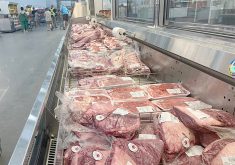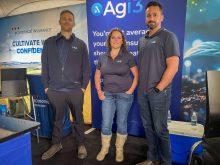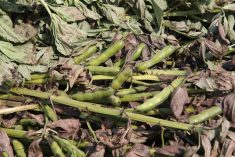Alberta’s Agriculture Financial Services Corp. outlines what it is doing to improve how producers can protect themselves
A senior policy analyst with Alberta’s Agriculture Financial Services Corp. says cow-calf producers must do better when it comes to using insurance to protect themselves.
In December at the Western Canada Conference on Soil Health and Grazing in Edmonton, Stuart Chutter talked about the coverage currently available to livestock producers and how AFSC can also do a better job of helping producers.
Chutter, who is also a rancher, said risk management tools such as AgriStability and AgriInvest sent $4 billion to the agriculture sector and only $505 million to grasslands.
Read Also

House ag committee to undertake several studies
The House of Commons standing agriculture committee has set its agenda for the coming months. Members began the fall sitting with a two-hour update on international trade
He said that equals about $11 per acre into perennial crops and grazing livestock, which is around a third of what goes to annual crop production.
“There’s definitely a case to be made that one of the best policy tools for protecting the environment in Alberta and in Canada is policy that protects our grazing sectors and the grasslands that they steward,” Chutter said.
He said increasing perennial crop coverage to be equal to annual crop production isn’t the goal. Instead, the goal is to simply improve risk management tools for the grassland sector.
AFSC is approaching that through the moisture deficiency program, which is designed for pasture and hayfields and uses the amount of precipitation that falls at selected weather stations. It is based on accumulated precipitation at the station rather than actual pasture conditions.
Changes were made to the program in 2022 and 2023, adding an extreme heat parameter and tweaking the minimum moisture threshold. The agency also moved to monthly payments so cash could get out faster to producers.
In 2021, indemnities per acre for perennials were about one-sixth compared to annual acres, but after the changes in 2024, around 60 per cent of perennial crop acres indemnities were being supported.
“After these changes were put in place into the program, that ratio changed drastically, and perennial crop acres were much more supported of a meaningful amount,” Chutter said.
Now, more than 40 per cent of Alberta’s perennial grasslands and crops are insured.
Chutter said annual crop producers usually have a 70 to 80 per cent participation rate, so while 40 per cent is a good start, there is still more to be achieved.
Only 13 per cent of Alberta’s cattle herd is protected or enrolled in AgriStability, he added.
To combat this, AFSC has been working on a pilot program since 2023 with 42 producers to see what program changes could be made to convince more of them to buy into risk management.
“No program changes as of now, but the work being done to try and figure out what are those gaps and how can the program change to make that more responsive,” he said.
Chutter emphasized how important it is for cattle producers to manage their risk.
“When cow herds decrease, we lose grasslands, but just as importantly, to highlight that doesn’t reverse easily. Things that are lost are lost. Cows don’t just get repopulated once those businesses have exited or land been conserved.”


















